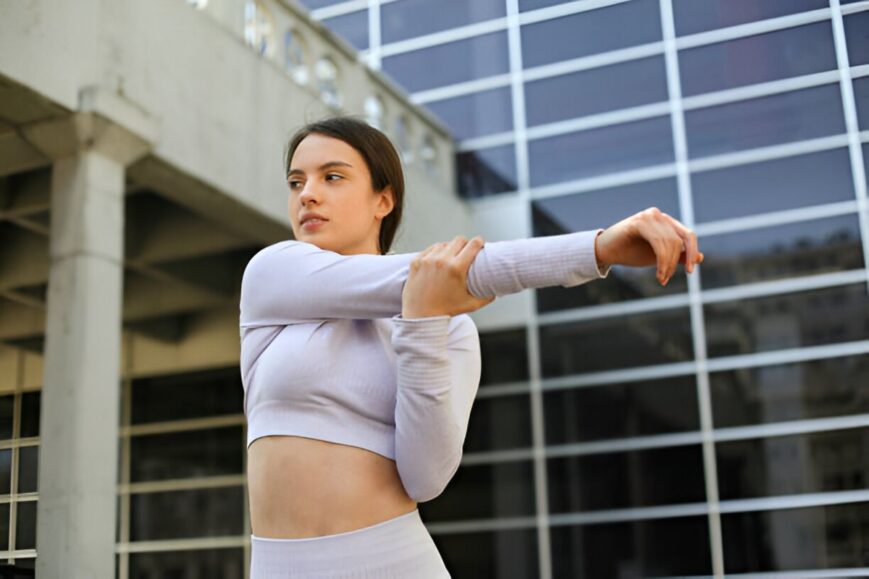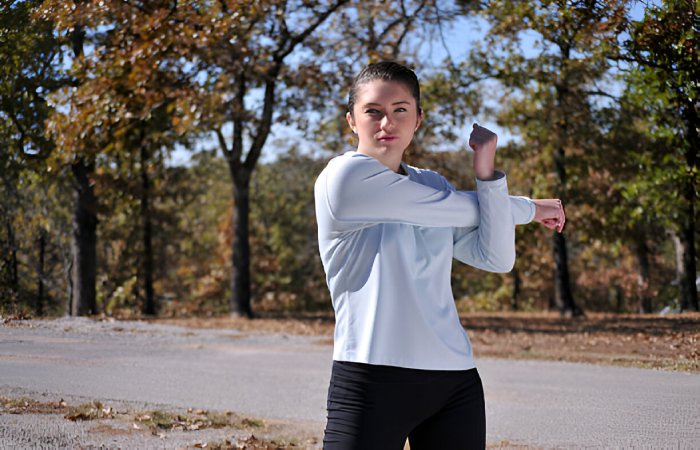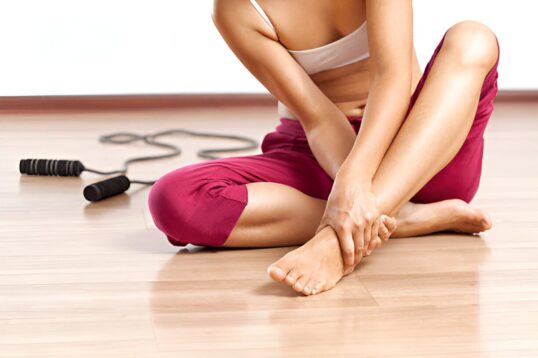The trap stretches are essential for releasing tension and enhancing the upper back, shoulders, and neck flexibility because they engage the trapezius muscles. Here’s everything you need to know about them:
Benefits of Trap Stretches
- Relieves Tension: This can ease tension and aches in two particular muscles, the trapezius muscles, located at the back of the neck down to the shoulder base.
- Improves Flexibility: Stretches the muscles and gives the spine the much-needed flexibility in the upper part of the back, the neck, and the shoulders.
- Reduces Stress: It is also recommended that all these muscles be stretched to assist in reducing stress and further enable relaxation.
- Prevents Injuries: Stretches offer a preventive function, which should help avoid strain and injuries because of muscle stiffness.
- Enhances Posture: Beneficial for people who sit for long hours in front of computers, it assists in releasing tight muscles around the shoulders that tend to pull the clients forward and make them slouch.
How to Stretch Your Traps? And Types of Trap Stretches
1. Upper Trapezius Stretch
Method:
- Sit or stand upright.
- Lower your head to the side with your ear to touch the shoulder.
- Lay your hand on your head and extend the stretch by increasing the pressure towards the head.
- Hold for 20-30 seconds.
- Repeat on the other side, again.
2. Cross-Body Shoulder Stretch
Method:
- Clasp your hands with your right hand above your head and left hand below it.
- Grab the end of the reached arm with the hand on the opposite side and pull that arm towards your chest.
- Hold for 20-30 seconds.
- Switch arms and repeat.
3. Corner Stretch
Method:
- Position yourself with your back to a corner with your hands raised and positioned to the shoulder level with the elbows slightly bending.
- Extend your arms to the wall, and rest your forearms on the opposite walls of the corner.
- Lean forward slowly and stop when you sense a mild stretching of your chest and shoulders.
- Hold for 20-30 seconds.
4. Doorway Stretch
Method:
- Choose a door and place yourself in front of it with your palms up, forearms parallel to the floor, and perpendicular to your upper arms.
- Rest your wrists and forearms on the door frame.
- Approach the door with one leg and pull your chest towards the doorway as if you wish to touch it with your chest until you feel the stretch on the chest and shoulders muscles.
- Hold for 20-30 seconds.
5. Seated Levator Scapulae Stretch
Method:
- Stand erect; sitting straight has the back of your body aligned correctly.
- With one hand, grip the bottom of the chair’s armrest.
- Bend your head to about forty-five degrees forward and rotate the eyes down to the contralateral armpit.
- Bend the opposing arm to hold the top of the head using your hand and pull your head back even further.
- Hold for 20-30 seconds.
- Repeat on the other side.
Tips for Effective Stretching
- Warm-Up: Light cardio or warm-up exercises must be performed to help bring blood to the muscles before stretching.
- Breathe Deeply: Relaxing muscles, especially during exhalation, also helps to increase the effect of the stretch.
- Avoid Bouncing: Stretch gently and progressively; do not overstrain the muscles by suddenly pulling them.
- Listen to Your Body: Mild discomfort but not painful; you stretch to the point you are uncomfortable. Do not push through the pain. If you experience pain, do not strain beyond this point in the stretch.
- Consistency: If possible, use the trap stretches in your normal workouts for the best results to be obtained.
When to Stretch
- After Workouts: Flexing after exercising helps relieve the pains of muscle stiffness and other related knots.
- During Breaks: If you work at a desk, getting up occasionally to stand, stretch, and bend will keep the muscles limber.
- When Tense: Take stretch breaks when you feel tension inside your neck, shoulders, or upper back.
Daily trap stretching has benefits, including flexibility and the trap’s postural position, less tension, and overall well-being. Include these stretches into your exercises to influence your trapezius muscles’ health positively.



